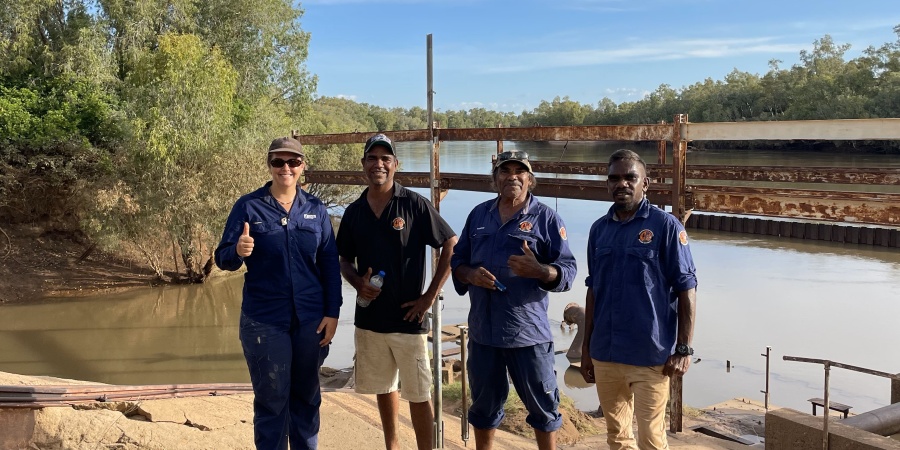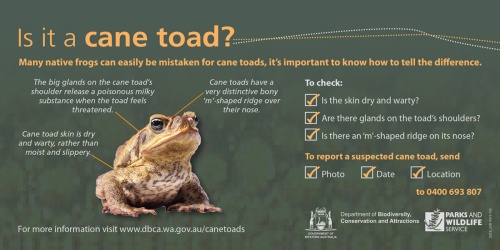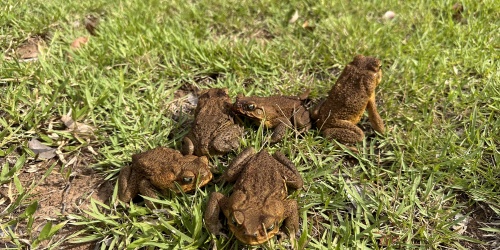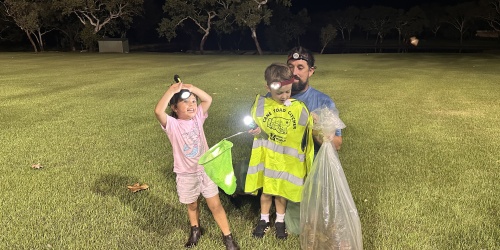
DBCA staff member Mish with Nyikina Mangala Rangers at a survey site. Photo Ian Cooksey/DBCA
Surveillance and monitoring is about detecting and reporting the presence of cane toads in particular areas, to prevent the accidental introduction of the species ahead of the front line.
DBCA, researchers and land managers join forces during the wet season to track the movement of cane toads. This involves employing various monitoring techniques, including nocturnal observations, to visually spot and listen for the toads. Surveillance and monitoring helps identify the presence of cane toads, which assists the department in its delivery of conditioned taste aversion and other management actions.
Reporting any sightings of cane toads that are more than 50km ahead of the front line is essential, as these cane toads may have been unintentionally transported and could potentially establish new satellite populations This could cause the cane toad front line to advance further and faster than the predicted spread, making prompt reporting and management critical to effective control.
If you suspect you have found a cane toad ahead of the front line, please send a photo of the toad to our Cane Toad hotline on 0400 693 807. In partnership with land managers the department can then respond quickly before new populations become established.
View the Identifying cane toads page.
eDNA and cane toad detection
What is eDNA?
Environmental DNA (eDNA) technology is a method used to detect the presence of organisms in an environment by analysing water, soil, or air samples for traces of DNA that animals leave behind. These traces can include skin cells, scales, hair, or other bodily secretions. By matching the extracted DNA to known species, scientists and land managers can identify the presence of specific organisms, like cane toads.
Why is eDNA important in the detection of cane toads?
eDNA technology provides monitoring and surveying programs with an efficient and time-saving method for detecting cane toads. It offers a practical addition to traditional survey techniques like spotlighting and daytime searches. By incorporating eDNA sample collections into routine ranger activities, researchers and land managers can achieve early identification and intervention of for cane toads, enhancing their ability to detect them quickly and accurately.
The use of eDNA enables the creation of an inventory of animals that have passed through the environment, aiding in the development of a cane toad frontline map.
DBCA's eDNA facility at the Kieiran McNamara Conservation Centre in Perth, is investigating the role of this technology to develop a low-cost, portable eDNA test that can be used to detect cane toads, particularly in remote areas like the Kimberley islands. This technology will allow rangers and land managers to collect and send samples from distant locations to the Perth laboratory, while still yielding viable results.
Numerous Aboriginal ranger groups have been pivotal to trialling this new technology while undertaking other survey work to map cane toads and species most vulnerable to cane toads in the West Kimberley.
Visit the Cane Toad Management Partnerships and Collaborations page.





